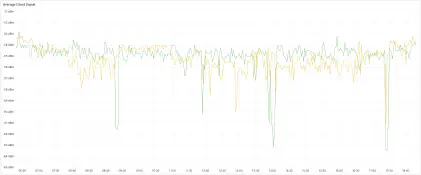The Power of Historical Network Performance Data: Why You Should Collect and Analyze It

David Hallum
September 6, 2023
In our increasingly connected world, networks play a pivotal role in both personal and professional aspects of our lives. Whether it’s for business operations, remote work, online gaming, or streaming your favorite content, a well-functioning network is essential. To ensure optimal network performance and troubleshoot issues effectively, collecting historical network performance data is crucial. In this blog post, we’ll explore the reasons why collecting and analyzing historical network performance data is essential.
- Proactive Issue Identification
One of the primary benefits of collecting historical network performance data is the ability to identify issues before they become critical. Network issues often start as minor glitches, but without the ability to track their progression over time, they can snowball into major disruptions. Historical data allows you to spot patterns, anomalies, and trends that may indicate impending problems. By addressing issues early, you can prevent costly network downtime and service disruptions.
- Root Cause Analysis
When network problems do arise, having historical performance data at your fingertips can be invaluable for troubleshooting. It helps you identify the root causes of issues, such as identifying which devices, servers, or applications are causing network bottlenecks or performance degradation. Historical data provides the context necessary to pinpoint the origin of problems and develop effective solutions.
- Performance Optimization
Collecting historical network performance data enables you to optimize your network for better performance. By analyzing historical trends, you can identify periods of high and low network traffic, helping you allocate resources more efficiently. It can also assist in capacity planning, ensuring that your network infrastructure can handle future growth and demands.
- Quality of Service (QoS) Monitoring
For businesses, ensuring the quality of service is critical, especially when it comes to real-time applications like video conferencing and VoIP. Historical network performance data allows you to monitor QoS metrics over time and make adjustments to meet the expectations of end-users. This leads to improved user satisfaction and productivity.
- Compliance and Reporting
In various industries, compliance with regulatory standards is essential. Historical network performance data can help organizations demonstrate compliance with data retention and security requirements. It provides evidence of network activities and can be used for auditing purposes, making it easier to prove adherence to industry regulations.
- Cost Control
Network infrastructure represents a significant investment for any organization. By collecting historical data, you can analyze resource utilization and identify opportunities for cost savings. This could involve downsizing unused or underutilized network components, optimizing energy consumption, or renegotiating service contracts based on historical usage data.
- Trend Analysis and Predictive Maintenance
Historical network performance data offers a treasure trove of information that can be used for trend analysis and predictive maintenance. By studying past data, you can anticipate when hardware or software components are likely to fail or require upgrades. This proactive approach saves time and resources while reducing the likelihood of critical network failures.
Conclusion
In an age where network reliability and performance are paramount, the collection and analysis of historical network performance data have become a necessity. It not only helps in proactive issue identification but also aids in root cause analysis, performance optimization, quality of service monitoring, compliance, cost control, and predictive maintenance.
For businesses and individuals alike, understanding the past is the key to building a more reliable and efficient network for the future. By harnessing the power of historical network performance data, you can ensure that your network remains robust, responsive, and adaptable to the ever-evolving demands of the digital age.

